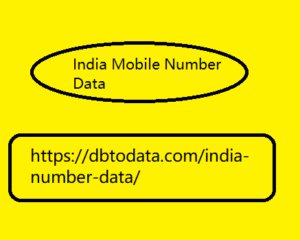Post by account_disabled on Mar 11, 2024 10:49:14 GMT 7
LinkedIn has published some news on the functioning of its content classification algorithm (the characteristics of which I explored here ). When the user enters the platform, the system identifies a list of possible posts candidates to be shown. The screening of candidates is carried out by applying a "light classification algorithm" to each post which has the task of predicting whether it will be liked by the user. What LinkedIn's ranking algorithm considers The prediction, made thanks to machine learning models, takes into account: P (the action) = the probability that the user takes an action upon seeing the post candidate to be shown And [downstream clicks/virals | action] = the downstream effect, i.e. the viral effect that would be generated (subsequent interactions) if the user who sees the candidate post takes an action (e.g. a like) And [upstream value | action] = the upstream effect, i.e.
The positive effect on the author of the post (in terms of motivation to India Mobile Number Data write more) that could be generated if the user who sees the candidate post takes an action (e.g. a comment) . These three elements are balanced in order to maintain a “healthy” news ecosystem. Easier said that done. In reality the system will tend to show only the posts that are most likely to be clicked on. This is why a new signal was introduced: the dwell time. The importance of dwell time The time spent, which the Facebook algorithm already takes into account , is a signal of interest in very useful content. In fact, clicks and other interactions are not always enough. There are passive users who read posts without taking any action, users who click a link but immediately close the page or who compulsively like content of poor quality. Typically each update allows you to consider two types of residence time.

The first "on the feed" which starts from the moment at least half of the content appears on the scroller's screen. The second is "after the click", i.e. the time spent on the linked content. linkedin algorithm and dwell time By analyzing millions of different posts, LinkedIn correlated the period of view of the post with the probability of interactions. As imaginable, there is a time T skip in which the user "looks and passes" (the dotted green line), after that time, the longer he stays reading it, the more the probability of our interaction increases. So today LinkedIn's classification algorithm also considers this factor when it has to decide which updates to show us. This is a further step, not yet decisive, in predicting interest in content algorithmically.
The positive effect on the author of the post (in terms of motivation to India Mobile Number Data write more) that could be generated if the user who sees the candidate post takes an action (e.g. a comment) . These three elements are balanced in order to maintain a “healthy” news ecosystem. Easier said that done. In reality the system will tend to show only the posts that are most likely to be clicked on. This is why a new signal was introduced: the dwell time. The importance of dwell time The time spent, which the Facebook algorithm already takes into account , is a signal of interest in very useful content. In fact, clicks and other interactions are not always enough. There are passive users who read posts without taking any action, users who click a link but immediately close the page or who compulsively like content of poor quality. Typically each update allows you to consider two types of residence time.

The first "on the feed" which starts from the moment at least half of the content appears on the scroller's screen. The second is "after the click", i.e. the time spent on the linked content. linkedin algorithm and dwell time By analyzing millions of different posts, LinkedIn correlated the period of view of the post with the probability of interactions. As imaginable, there is a time T skip in which the user "looks and passes" (the dotted green line), after that time, the longer he stays reading it, the more the probability of our interaction increases. So today LinkedIn's classification algorithm also considers this factor when it has to decide which updates to show us. This is a further step, not yet decisive, in predicting interest in content algorithmically.
